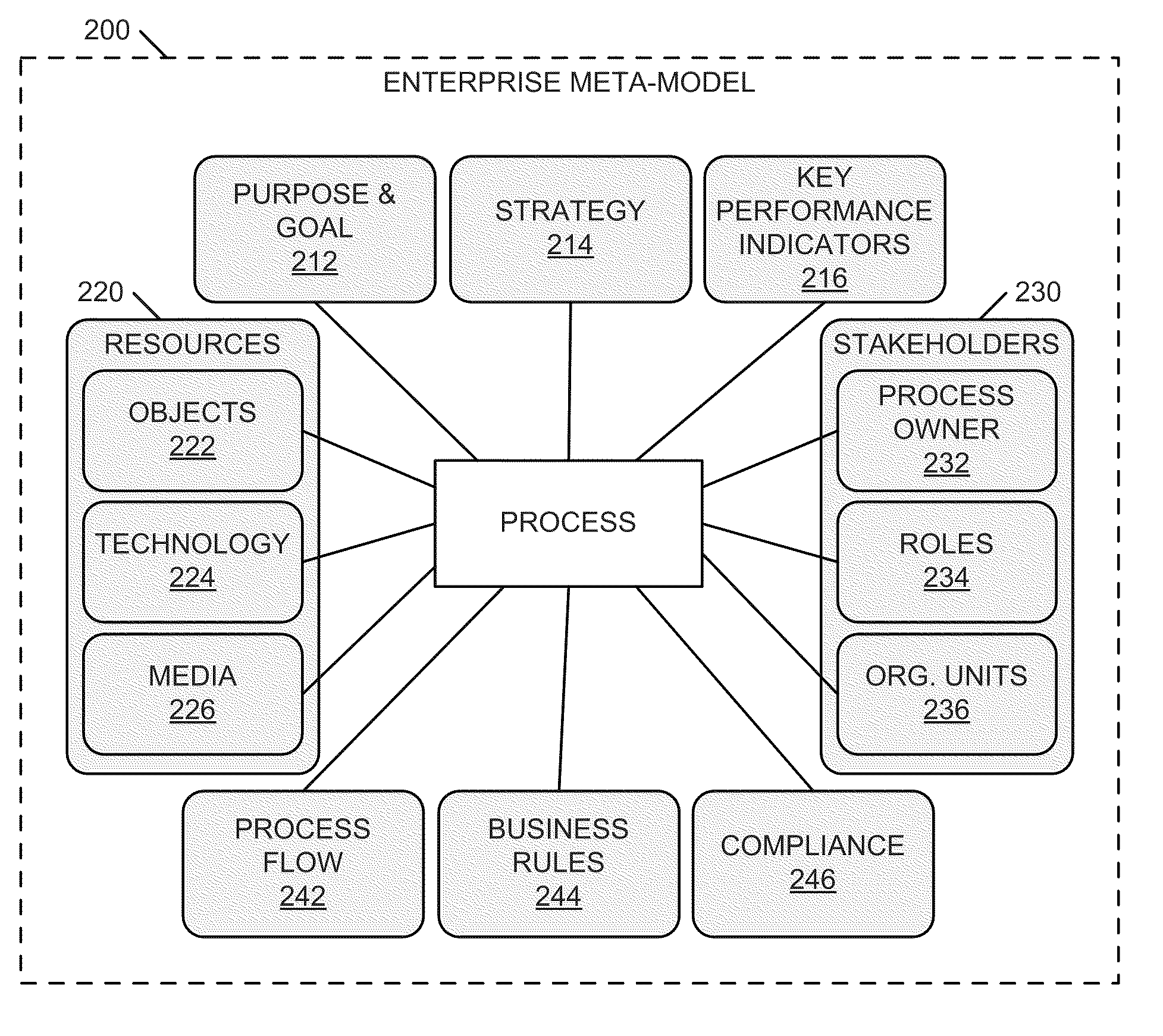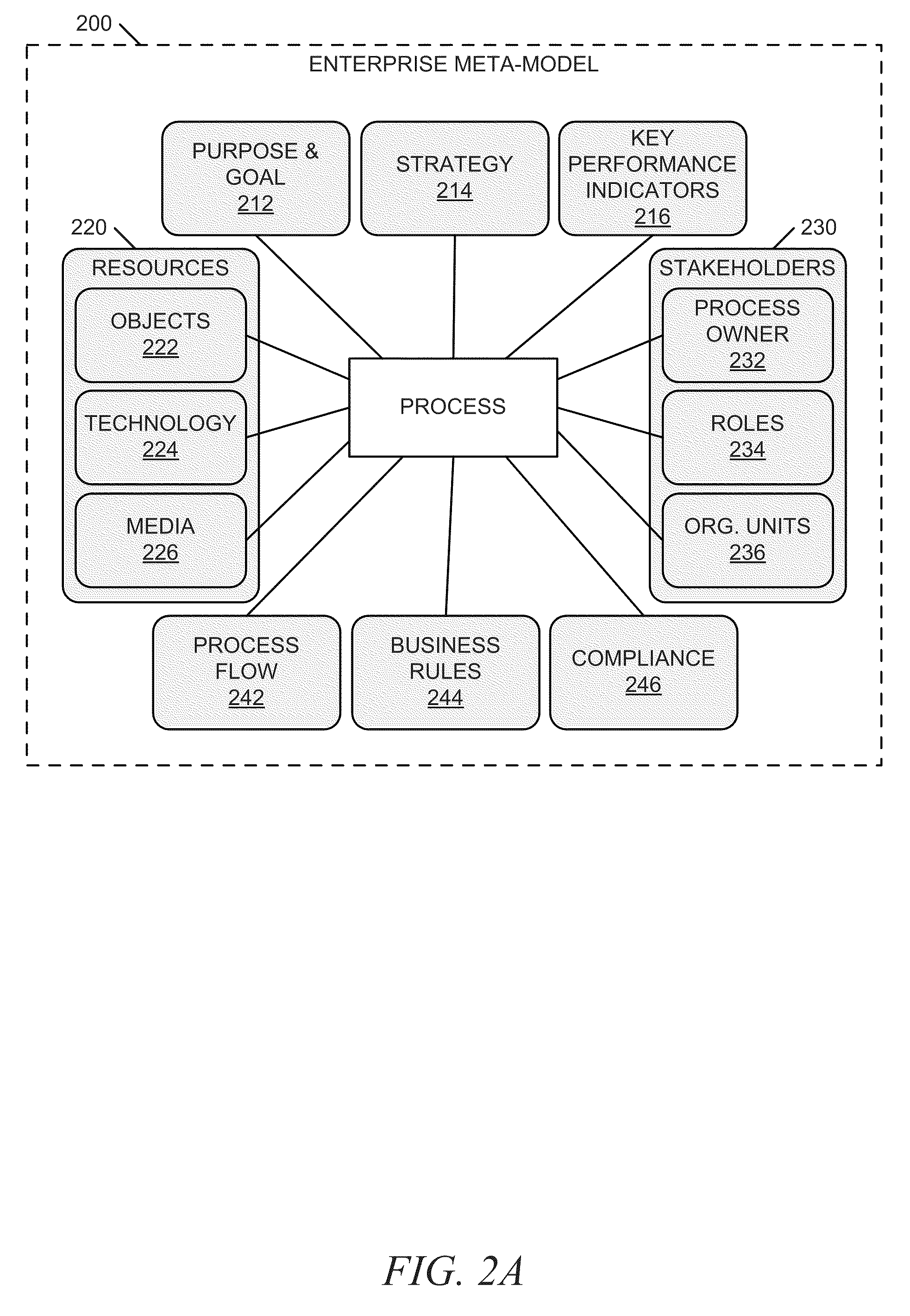Systems and methods for integrating process perspectives and abstraction levels into process modeling
a technology of applied in the field of system and method for integrating process perspectives and abstraction levels into process modeling, can solve the problems of complex design of process models, time-consuming and complex task of business process modeling, and complex task of process modeling
- Summary
- Abstract
- Description
- Claims
- Application Information
AI Technical Summary
Benefits of technology
Problems solved by technology
Method used
Image
Examples
compliance embodiment
[0055]FIG. 6 is a block diagram illustrating a system for integrating process perspectives and abstraction levels into business process modeling, according to an example embodiment. The system 600 includes a business policy and rule modeling engine 610, a business process modeling engine 620, a policy matching module 630, a validation module 640, and a repository 650. In certain examples, the business policy and rule modeling engine 610 can include a visual policy and rule modeling module 612 and a business policy and rule formalization module 614. The business process modeling engine 620 can also include a visual process modeling module 622 and a business process formalization module 624. In some examples, the repository 650 can include a business policies and rules database 652, a business processes database 654, and a framework and application ontologies database 656. In an example, the enterprise meta-model 200 discussed above is stored within the repository 650.
[0056]The busine...
technical implementation example
[0071]FIG. 10 is a block diagram illustrating a technical implementation of the business policy and rule modeling engine 610, according to an example embodiment. The various components used within the implementation of a system 1000 are shown in an architecture diagram using fundamental modeling concepts (FMC) notation. The system 1000 includes a business policy and rule modeling user interface 1004, an ontology component 1006, a visual component 1008, a reasoner component 1010, a visual ontology 1012, and the repository 650. In an example, the ontology component 1006 includes a rule syntax checker 1014, an ontology API 1016, and a parser / serializer 1018. Additionally, the reasoner component 1010 can include an ontology2logic program 1020 and a reasoner 1022.
[0072]In this example embodiment, a policy modeler 1002 interacts with the business policy and rule modeling user interface 1004, which provides visual modeling elements depending upon whether a business policy or a business rul...
PUM
 Login to View More
Login to View More Abstract
Description
Claims
Application Information
 Login to View More
Login to View More - R&D
- Intellectual Property
- Life Sciences
- Materials
- Tech Scout
- Unparalleled Data Quality
- Higher Quality Content
- 60% Fewer Hallucinations
Browse by: Latest US Patents, China's latest patents, Technical Efficacy Thesaurus, Application Domain, Technology Topic, Popular Technical Reports.
© 2025 PatSnap. All rights reserved.Legal|Privacy policy|Modern Slavery Act Transparency Statement|Sitemap|About US| Contact US: help@patsnap.com



